A ‘French Leave’ in Paris on a Eurailpass
Part 2 of 3 articles on the return of an Exchange Student 50 years after his first trip to Europe in 1972.
FRANCE
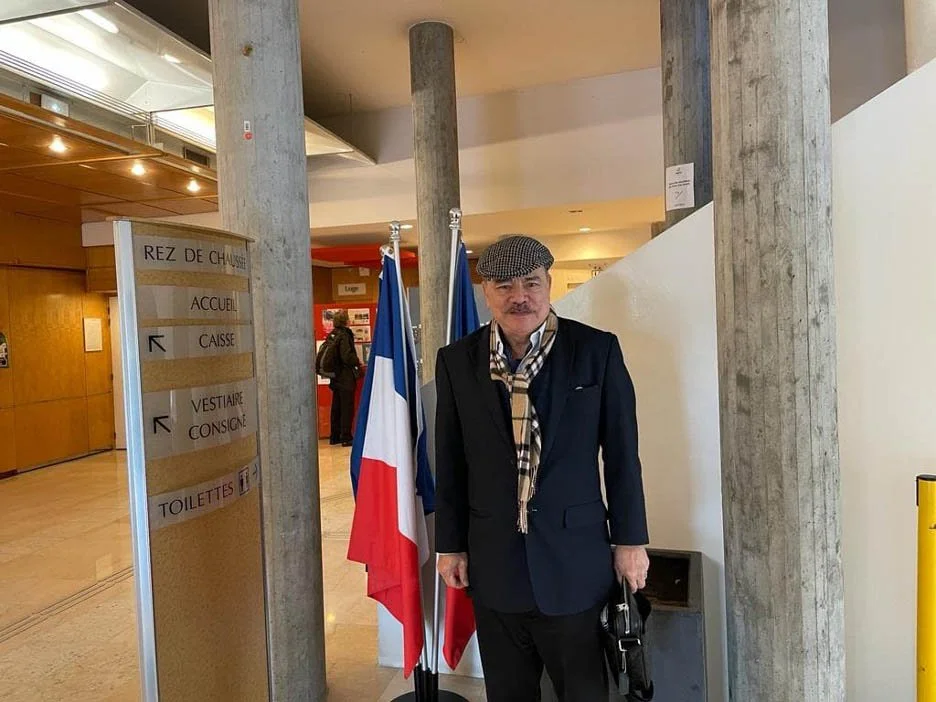
A la recherche du Temps Perdu, a Proustian search for an ancestor in the Paris Archives.
In the 19th century, Jose Rizal, the Luna brothers and Filipino students pursuing studies in Spain made a beeline whenever they could for Paris, where the Belle Epoque represented all that was not in conservative Madrid. The ideals of the French Revolution and of liberal thinkers were what many of the Filipino colonials aspired for, and it was no coincidence that strains of the Marseillaise could be heard in the later 1898 Himno Nacional de Filipinas. The stunning vision of the brand new Eiffel Tower and the varied pavilions in the Exposition Universelle of 1889 in Paris would surely have impressed them. At the time, France and Great Britain would have been cutting edge; the United States, was still on the rise as a world power.
During my days as a college student, much of the French cachet was still around—in philosophy and literature, with Jean Paul Sartre, Simone de Beauvoir, Albert Camus, Maurice Merleau-Ponty, Henri Bergson and Claude Levy-Strauss; in the arts with the Impressionists, the Cubists and Post-Moderns; in cinema with the nouvelle vague directors; not to mention the myriad French designers whose names were now in ready-to-wear or pret-a-porter. Filipinos were acquainted with France through Hollywood eyes in such popular movies as Two for the Road and A Man and a Woman.
Hence to France, where I would also study at the University of Paris XI and the International Institute of Public Administration from 1980-81.
In 2022, the world was just recovering from the two-year shutdown brought about by the COVID pandemic. One could almost hear the collective sigh of relief in the youthful crowds teeming on the Champs Elysees.
Since Paris always offers an embarrassment of choices, I decided to focus on selected representative venues, which include (1) the Guimet National Museum of Asian Arts; the newly reopened (2) Bibliotheque Nationale de France, Site Richelieu (the National Library of France at this location); the restored (3) Bourse de Commerce (Stock Exchange) with its Pinnault Art Collection; and (4) the Museum of the Louis Vuitton Foundation. An unexpected visit to the (5) Cite de l’Architecture et du Patrimoine in the Palais de Chaillot was the bonus to my first visiting day in the city. In addition, I had also determined to visit the (6) Paris Archives to continue my private research on a 19th century French ancestor.

The Guimet National Museum of Asian Arts has always been one of my favorites in Paris, with its huge and definitive collection of Oriental arts. Located near the Trocadero Palace in the fashionable 16th arrondissement, the Guimet Museum was now featuring Afghanistan, whose troubled present conceals a rich and magnificent past at the crossroads of humanity’s greatest religions and conquests. A section on Afghan textiles and fashion subtly shows us how the Taliban have repressed the creativity of Afghani artists and women since such could not possibly flourish under the present regime.

Guimet National Museum of Asian Arts
The Guimet’s splendid trove of Cambodian and Southeast Asian art reflects the major role that France played in the rediscovery of Angkor Wat when it still ruled Indochina. The reconfigured exhibit allows us glimpses from high galleries into rear views of statuary we only saw full frontal before. Footnotes on Andre Malraux unconsciously stir us to recall his intriguing ascent from adventurer to French Minister of Culture.
While the Notre Dame is still being repaired from the 2019 fire, the sculptures from this cathedral have been put on display at the Cite de l’Architecture et du Patrimoine at the Palais de Chaillot at the Trocadero. This was a most appropriate venue since the museum features French heritage and architecture, and what could be more quintessentially French than the Notre Dame of Paris?

The Sculptures of Notre Dame de Paris at the Trocadero Palace Cite Museum of Architecture and Heritage.
Actually, the museum was also closed for that day, but a friendly curator allowed me a private visit to this site. An advantage is that the viewer could now view up close the sculptures and artwork that would normally be beyond proximate vision. Who would ever think that one could come face-to-face with a statue of the 13th century that had been up there through the ages?
Is it any wonder that after the pandemic, the French would unveil a spectacularly restored National Library, the Bibiotheque Nationale de France(BnF)? Nevertheless, the work took 12 years of toil which today celebrates French creativity and devotion to knowledge under the royal patronage of the French kings. All under one roof are a library, archives and a museum. Fronting the Rue Vivenne is a garden featuring plants used for printing material throughout the ages, beginning with the papyrus. Within the edifice are the Galeries Mazarin and Mansart as well as the piece de resistance—the oval grand reading room of the Salle Labrouste.

Ceilings in the newly restored Bibliotheque Nationale de France
Vis-à-vis the Bibliotheque(BnF) is a famous restaurant or brasserie, le Grand Colbert, honoring the Finance Minister of King Louis XIV. I was fortunate enough to book a place for lunch for a classic French meal that satisfied both body and spirit. These included escargots de Borgogne Maison Valentin (snails); Roasted Chateaubriand (beef) with Lyonnaise potatoes; and a Baba Au Rhum as dessert with espresso. The restaurant has been used as sites of such films as “Something’s Gotta Give” with Diane Keaton, Keanu Reeves and Jack Nichols. In fact, the first time I tried to dine at le Grand Colbert, it was closed for another film production.
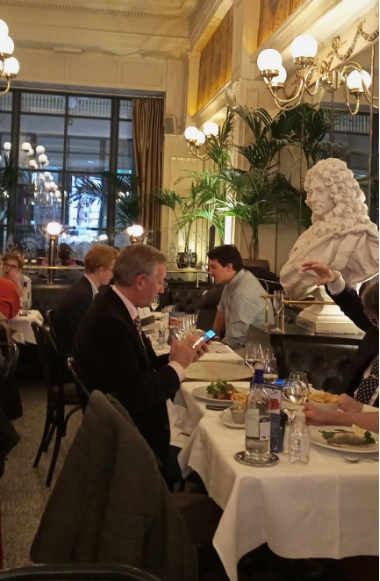
Dining with the statue of le Grand Colbert near the Bibliotheque National de France.
The restoration of the Bourse de Commerce, or Stock Exchange, unites a classic 19th century building with its spectacular round central hall and a distinguished art collection donated by philanthropist Francois Pinault. The edifice had once been used as an exchange hall for grains like wheat and millet and had been described by Arthur Young as such: “The most beautiful thing that I have ever seen in Paris is the Grain Hall...the dome is so light as if suspended from a fairy’s hands.” It was restored by Japanese architect Tadeo Ando, who stated that “architecture acts as a hyphen between the past, present and future.”
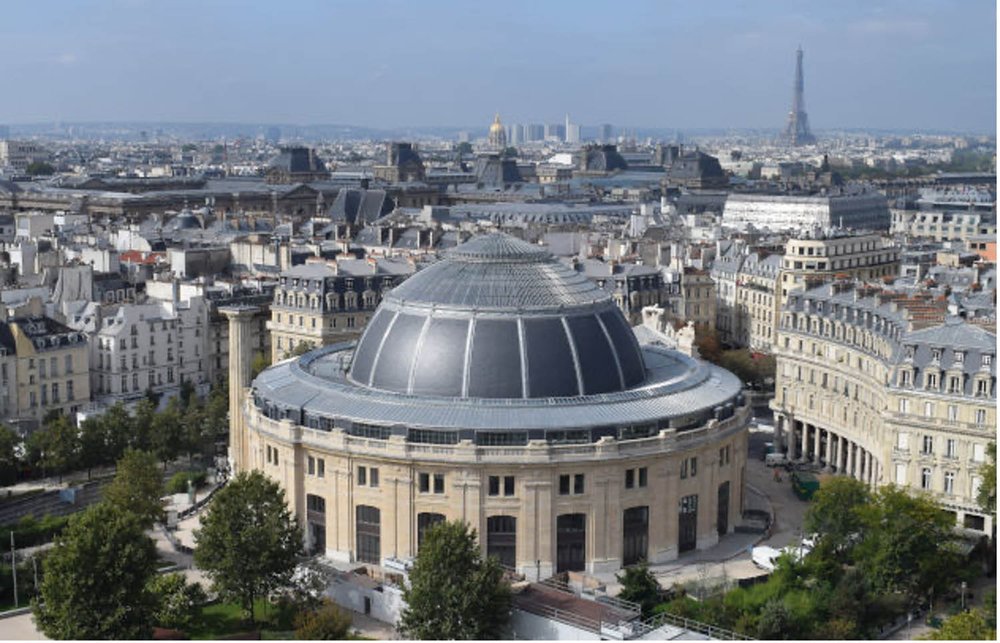
Bourse de Commerce with the Pinault Collection
Francois Pinault donated his collection with these words: ”With this new museum, in the heart of Paris, I intend to share my passion for contemporary art.” Indeed, the collection includes pieces of contemporary masters such as Maurizio Cattelan, Duane Hanson and Ryan Gander. An exhibit by Boris Mikhailov shows a series of 110 photographs taken in Kharkiv, the Ukrainian artist’s home town, after the dissolution of the Soviet Union in the early 1990s. The blue color of the prints reflects Mikhailov’s traumatic childhood memories of the Second World War: “Blue, for me, is the color of war…of bombings, of screeching sirens, of searchlights in the wonderful, dark-blue sky.”
I was also able to sample the Halle aux Grains restaurant as envisioned by restaurateurs Michel and Sebastian Bras on the top floor of the building.
The Museum of the Louis Vuitton Foundation was commissioned by Bernard Arnault with American architect Frank Gehry as its designer. It was first opened to the public in October 2014 as a path towards discovering contemporary artistic creation. My visit coincided with an exhibit called Monet-Mitchell featuring the juxtaposed works of the French Impressionist with contemporary American artist Joan Mitchell’s retrospective. While being highly original herself, the latter was inspired by Claude Monet and even once lived near Giverny, where Monet painted his famous triptych of water lilies, L’Agapanthe. The juxtaposition shows the conversation of two artists from different backgrounds across a century.
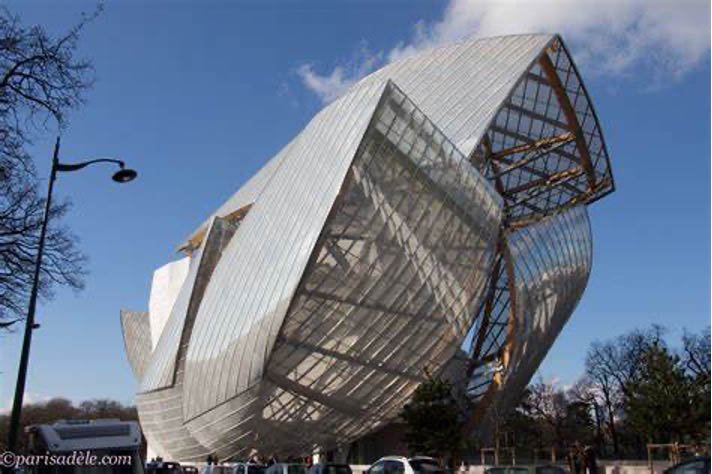
The Museum of the Louis Vuitton Foundation, building designed by Frank Gehry
I had promised myself that I would one day visit the Paris Archives to hunt for traces of a French ancestor, Antoine L’heritier, whose birthplace in Moulins-sur-Alliers (where Coco Chanel had once lived) I had once visited and of whom I already had some records from previous researches. Since I was there on All Soul’s Day, I half-hoped that I might be able to find where he had been buried in Paris, which was his last domain.
Working on a few details and with the help of a Parisian chercheur or research assistant, I was miraculously able to find his last address at a location which still exists, near the Gare du Nord. I was thus able to step into the threshold of my great-great grandfather’s last known address, 193 Rue Faubourg Saint Denis. I wondered whether—his place being so close to a train station-- my ancestor also had a fascination by trains and train stations, as they are depicted in some Impressionist paintings. Certainly, a lust for travel must have been in his genes.
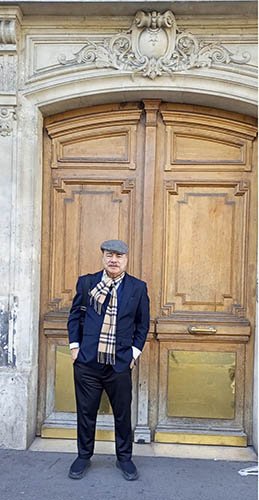
193 Rue de Faubourg St Denis, last known domain of a French ancestor, lost and found.
I may not have seen Antoine Lheritier’s grave, but on November 1, he just might have led me to his last domain. Sacre bleu!
New York, 10 January 2023

A career diplomat of 35 years, Ambassador Virgilio A. Reyes, Jr. served as Philippine Ambassador to South Africa (2003-2009) and Italy (2011-2014), his last posting before he retired. He is now engaged in writing, traveling and is dedicated to cultural heritage projects.
More articles by Ambassador Virgilio Reyes, Jr.

No comments